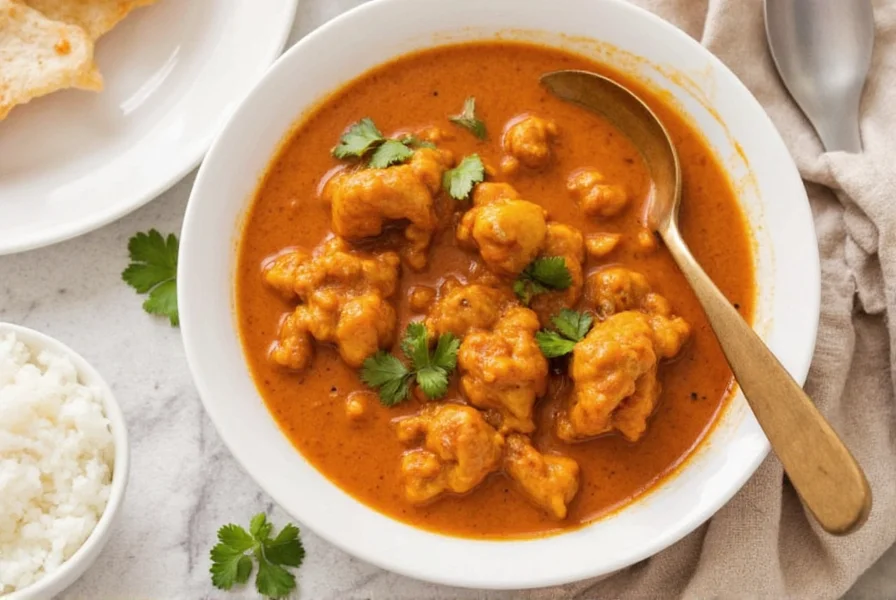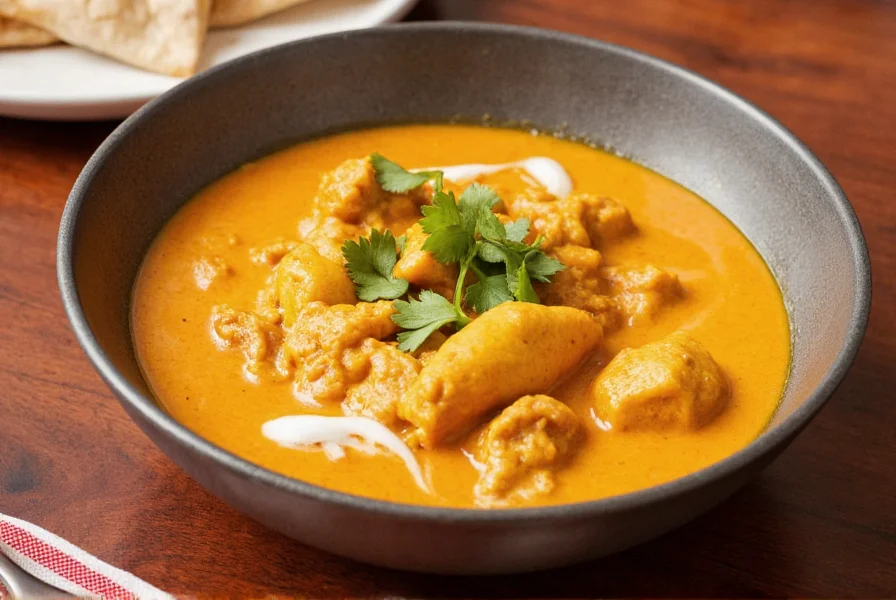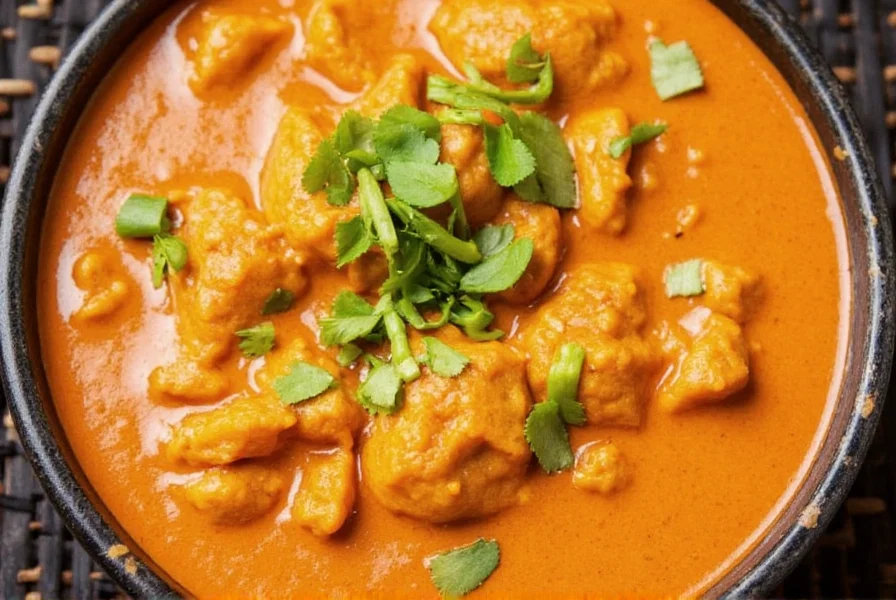The True Origins of Butter Chicken
Contrary to popular belief, butter chicken isn't an ancient Indian recipe but a culinary innovation from post-partition India. In the 1950s, Kundan Lal Gujral, owner of Moti Mahal restaurant in Delhi, created this dish as a solution for leftover tandoori chicken. By simmering the already-cooked chicken in a spiced tomato gravy with butter and cream, he transformed potentially dry leftovers into what would become one of India's most beloved dishes.
What makes this origin story significant is how it represents Indian culinary ingenuity—turning practical necessity into global phenomenon. The dish gained international popularity through Indian diaspora communities and has since evolved with regional adaptations while maintaining its essential character.
Authentic Butter Chicken vs. Common Misconceptions
Many Western interpretations of butter chicken stray significantly from the authentic version. True Murgh Makhani features:
| Authentic Characteristics | Common Misinterpretations |
|---|---|
| Mildly spiced (Kashmiri chilies for color, not heat) | Overly spicy with excessive chili heat |
| Smooth, emulsified sauce texture | Chunky tomato pieces visible |
| Subtle tang from tomatoes, not lemon | Overpowering lemon or vinegar tang |
| Cream added at the end for richness | Cream used as primary base |
Key Ingredients That Define Authentic Butter Chicken
The magic of traditional butter chicken lies in its carefully balanced ingredients. Unlike many restaurant versions that rely on pre-made sauces, authentic preparation requires specific components:
- Tandoori chicken - Must be properly marinated and cooked in a tandoor or oven before adding to the sauce
- Kashmiri red chilies - Provide vibrant color and mild heat without overwhelming spiciness
- Fresh tomatoes - Traditionally simmered and pureed for the base
- Makhani - The "butter" element comes from generous amounts of unsalted butter, not just oil
- Fenugreek leaves (kasuri methi) - The secret ingredient that adds distinctive aroma
- Cream - Added at the very end to maintain its delicate texture

Butter Chicken vs. Chicken Tikka Masala: Clearing the Confusion
These two dishes are frequently mistaken for each other, but they have distinct characteristics:
- Butter chicken (Murgh Makhani) originated in India and features pre-cooked tandoori chicken added to a smooth, buttery tomato sauce. The sauce is created first, then the chicken is simmered in it.
- Chicken tikka masala likely originated in the UK, featuring marinated chicken grilled as tikka pieces, then served in a spicier, creamier sauce that's often orange-colored from food coloring.
While both dishes share some similarities, butter chicken has a more delicate flavor profile with emphasis on the butter-tomato balance, whereas chicken tikka masala typically has stronger spices and a thicker, creamier sauce.
Essential Techniques for Perfect Butter Chicken
Creating authentic butter chicken at home requires attention to specific techniques that many recipes overlook:
- Proper tandoori chicken preparation - The chicken must be marinated in yogurt and spices, then fully cooked before adding to the sauce
- Sauce emulsification - Authentic recipes blend the tomato mixture until completely smooth, creating a velvety texture
- Layered spice incorporation - Spices are added at different stages for maximum flavor development
- Kasuri methi technique - Dried fenugreek leaves should be crushed between palms before sprinkling into the sauce
- Cream addition timing - Cream must be added off-heat to prevent curdling and preserve its delicate flavor
Regional Variations Across India
While Delhi claims the original butter chicken, regional variations have emerged across India:
- Punjabi style - Richer with more butter and cream, reflecting the agricultural abundance of the region
- South Indian adaptation - Sometimes includes subtle coconut milk for a different richness
- Restaurant chain versions - Many establishments have created their own signature styles, often with added sweetness
Understanding these variations helps appreciate butter chicken as a living dish that continues to evolve while maintaining its essential character.

Common Mistakes That Ruin Butter Chicken
Even experienced home cooks make these critical errors when attempting authentic butter chicken:
- Using raw chicken directly in the sauce instead of pre-cooked tandoori chicken
- Adding cream while the sauce is boiling, causing it to curdle
- Overcooking the sauce, which breaks down the delicate tomato-butter emulsion
- Using excessive chili powder instead of Kashmiri chilies for color
- Skipping the kasuri methi, which removes a signature flavor dimension
- Adding sugar to compensate for poor-quality tomatoes
Avoiding these pitfalls ensures your butter chicken maintains the delicate balance that makes it special—rich without being heavy, flavorful without being overwhelming, and comforting without being bland.
Frequently Asked Questions
What's the difference between butter chicken and chicken makhani?
There is no difference—butter chicken and chicken makhani refer to the same dish. "Makhani" means "buttery" in Hindi, so Murgh Makhani literally translates to "buttery chicken." The term "butter chicken" is the English name that became popular internationally.
Can I make authentic butter chicken without a tandoor?
Yes, you can create authentic-tasting butter chicken without a tandoor. The key is properly cooking the marinated chicken—use a very hot oven (450°F/230°C) or grill to get charred edges that mimic tandoori cooking. The distinctive smoky flavor can be enhanced with a few drops of liquid smoke or by placing a hot charcoal piece in a small bowl inside the sauce.
Why is my butter chicken sauce too watery?
A watery sauce typically results from insufficient reduction of the tomato base or adding too much liquid. Authentic butter chicken sauce should be rich and coat the back of a spoon. To fix watery sauce, continue simmering uncovered to reduce excess liquid, or create a small roux with butter and flour to gently thicken it without altering the flavor profile.
What are traditional sides for butter chicken?
Butter chicken is traditionally served with basmati rice (often jeera rice with cumin), naan bread (especially butter naan), and raita (yogurt condiment). In North India, it's common to accompany the meal with pickles, raw onions, and fresh cilantro. The combination of creamy sauce with fluffy rice and bread for scooping creates the complete authentic experience.
How can I make butter chicken less creamy for a lighter version?
To create a lighter butter chicken without sacrificing authenticity, reduce the cream quantity and increase the tomato content slightly. You can also use half-and-half instead of heavy cream, or add a small amount of Greek yogurt at the end. The key is maintaining the essential butter-tomato balance—never eliminate the butter completely, as it's fundamental to the dish's character and name.











 浙公网安备
33010002000092号
浙公网安备
33010002000092号 浙B2-20120091-4
浙B2-20120091-4